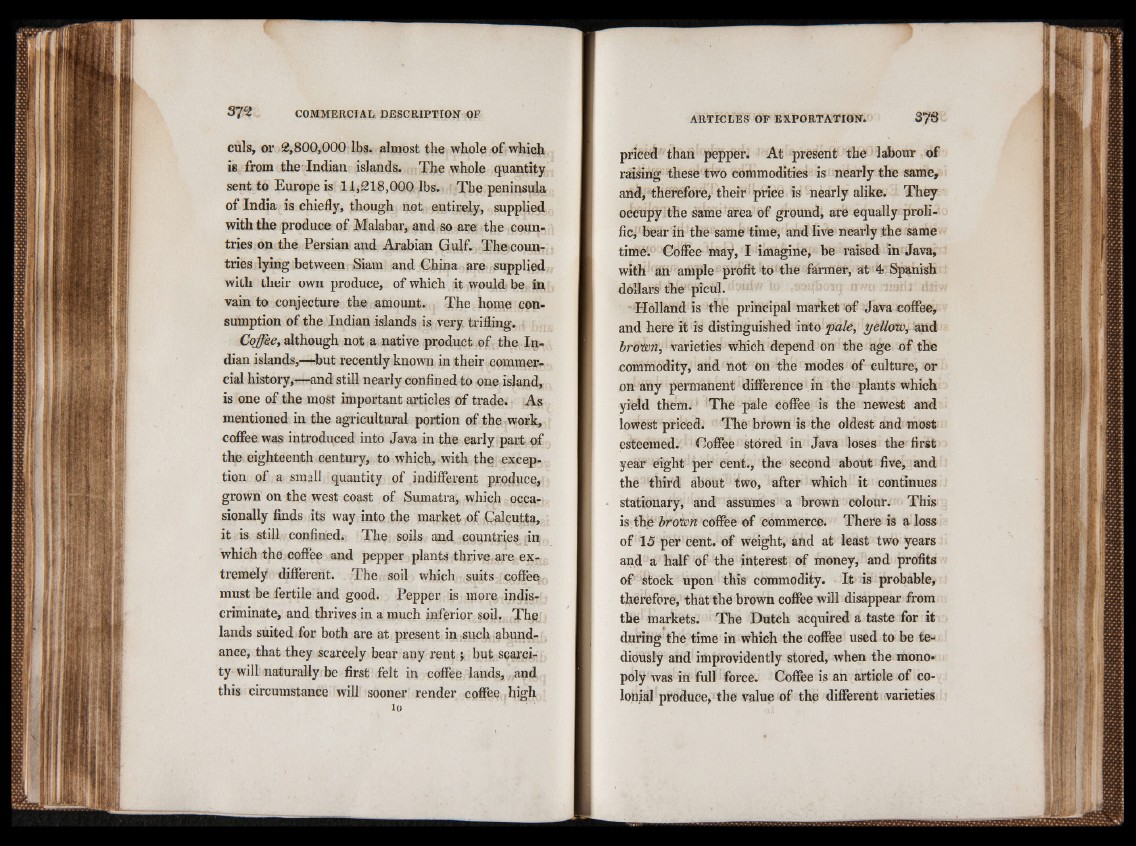
culs, or 2,800,000 lbs. almost the whole of which
is from the Indian islands. The whole quantity
sent to Europe is 11,218,000 lbs. The peninsula
of India is chiefly, though not entirely, supplied
with the produce of Malabar, and so are the countries
on the Persian and Arabian Gulf. Thecoun-
tries lying between Siam and China are supplied
with their own produce, of which it would be in
vain to conjecture the amount. The home consumption
of the Indian islands is very trifling.
Coffee, although not a native product of the Indian
islands,-^but recently known in their commercial
history,—and still nearly confined to one island,
is one of the most important articles of trade. As
mentioned in the agricultural portion of the work,
coffee was introduced into Java in the early part of
the eighteenth century, to which, with the exception
of a small quantity of indifferent produce,
grown on the west coast of Sumatra, which occasionally
finds its way into the market of Calcutta,
it is still confined. The soils and countries in
which the coffee and pepper plants thrive are extremely
different. The soil which suits coffee
must be fertile and good. Pepper is more indiscriminate,
and thrives in a much inferior soil. The
lands suited for both are at present in such abundance,
that they scarcely bear any rent; but scarcity
will naturally be first felt in coffee lands, and
this circumstance will sooner io render coffee high
priced than pepper. At present the labour of
raising these two commodities is nearly the same,
and, therefore, their price is nearly alike. They
occupy the same area of ground, are equally prolific,
bear in the same time, and live nearly the same
time. Coffee may, I imagine, be raised in Java,
with an ample profit to the farmer, at 4 Spanish
dollars the picul.
Holland is the principal market of Java coffee,
and here it is distinguished into pale, yellow, and
brown, varieties which depend on the age of the
commodity, and not on the modes of culture, or
on any permanent difference in the plants which
yield therm1 The pale coffee is the newest and
lowest priced. Thè brown is the oldest and most
esteemed. Coffee stored in Java loses the first
year eight per cent., the second about five, and
the third about two, after which it continues
stationary, and assumes a brown colour. This
is the brown coffee of commerce. There is a loss
of 15 per cent, of weight, and at least two years
and a half of the interest of money, and profits
of stock upon this commodity. It is probable,
therefore, that the brown coffee will disappear from
the markets. The Dutch acquired a taste for it
during the time in which the coffee used to be tediously
and improvidently stored, when the mono*
poly was in full force. Coffee is an article of colonial
produce, the value of the different varieties